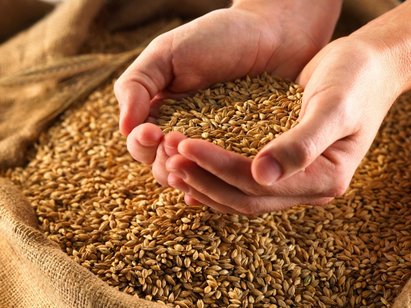 Traditionally hailing from the fertile crescent in Egypt and Israel, as well as other parts of the world such as Central America, South America, and Asia, an “ancient grain” refers to species of whole grains and seeds that have been part of the human diet for 10,000 years, but haven’t been modified over time by plant science, as opposed to more widespread cereal grains such as corn, rice and modern varieties of wheat, which are the product of thousands of years of selective breeding.
Traditionally hailing from the fertile crescent in Egypt and Israel, as well as other parts of the world such as Central America, South America, and Asia, an “ancient grain” refers to species of whole grains and seeds that have been part of the human diet for 10,000 years, but haven’t been modified over time by plant science, as opposed to more widespread cereal grains such as corn, rice and modern varieties of wheat, which are the product of thousands of years of selective breeding.
For many years, archaeologists have reported finding the remains of these grains in ancient sites. For example, researchers in China found the remains of charred wheat and millet in Yunnan that are thought to be nearly 4,000 years old, and in 1991 archeologists discovered the body of Ötzi the Iceman protruding from a melting glacier in the Italian Alps that had been preserved in ice for over 5,000 years. His last meal was preserved, examined and found to include einkorn wheat!
However, the term “ancient grain” doesn’t mean just a 5,000-year-old grain found in ice. It refers to the ancient types of grains that have only recently been “discovered” by the West. These heritage grains have been grown by different societies all over the world for thousands of years.
These include Einkorn, Emmer (Farro), Spelt (the original unhybridized wheat species of 10,000 years ago), Freekeh, and Kamut, and non-wheat grains such as Quinoa, Red and Black rice, Blue Corn, Buckwheat, Barley, Rye, Oats, Amaranth, and Millet. These grains retain their original high quality nutrition, distinctive rich nutty flavors, and are less allergenic than modern hybridized and genetically modified grains.
“Modern grains” such as wheat, corn, and rice have been extensively cross-bred to make them easier to grow and process into flours and starches that are used in breads, cereals, pastas and baked goods. “Modern wheat” is a hybrid descendant of the three ancient wheat varieties. Because of the changes modern grains have undergone over time, they have less nutrition and some people have developed allergies to the cross-bred, genetically altered proteins in the grains.
Ancient Grains for Modern Meals
The research shows that many ancient grains are higher in protein, vitamins, minerals and antioxidants than modern grains. All grains can be cooked similar to rice—add 1 cup grain to 2 cups liquid, bring to a boil, then reduce heat, cover and let cook until the grains are tender and chewy. The dried grains can also be ground into flour to make breads and other baked goods. Here are a few “new” ancient grains to try.
Ancient Wheat and Gluten Grains (there are anecdotal reports that some people who are sensitive to wheat can tolerate the ancient species of wheat, but that is on an individual basis):
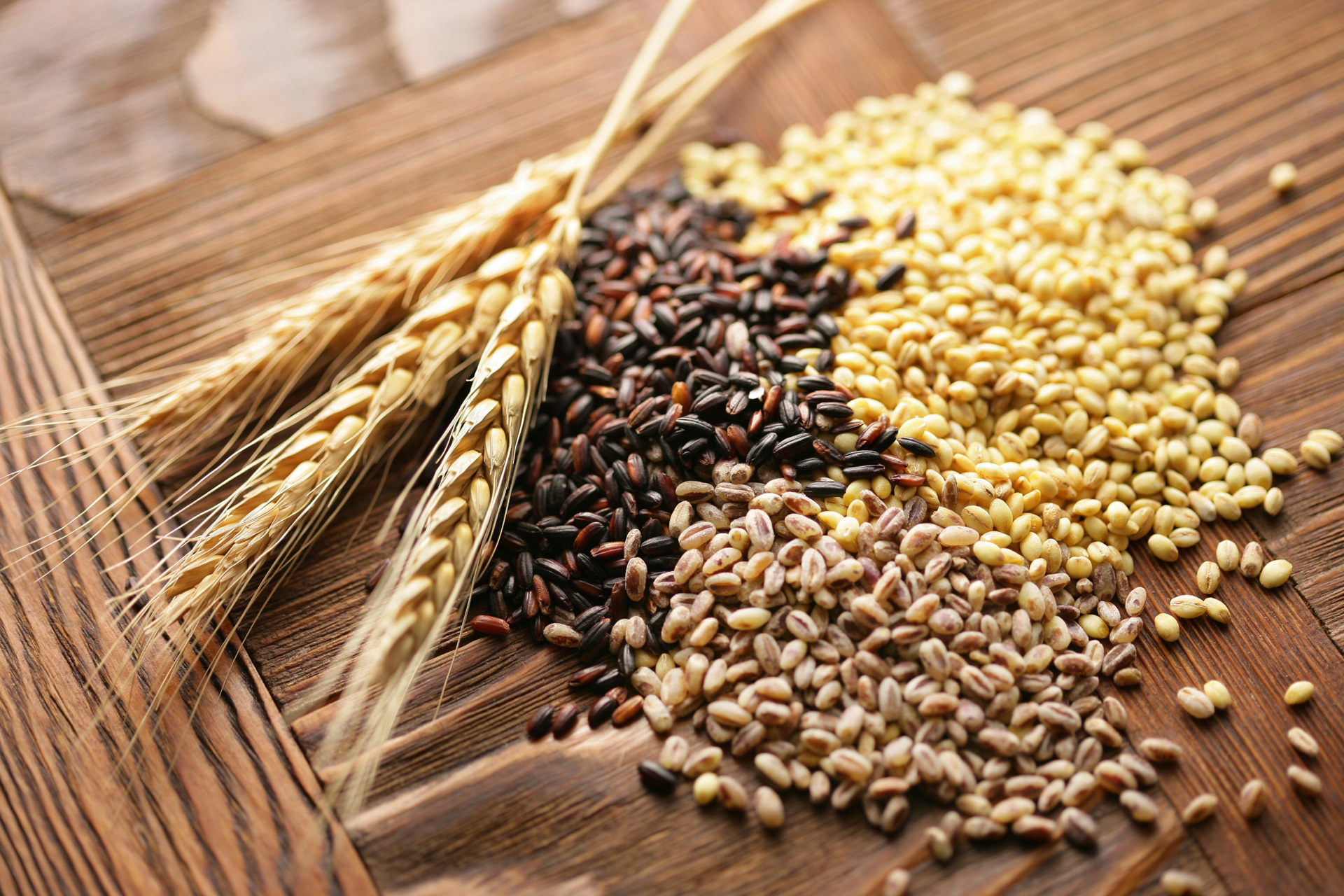 Einkorn is nature’s original wheat, the most ancient grain grown by the first farmers of the Fertile Crescent more than 10,000 years ago. Einkorn is very different from other varieties of wheat because it is the only wheat species never to be hybridized. And this difference is clearly visible. Einkorn grows very tall, as wheat did long ago; each einkorn kernel is a third of the size of today’s modern wheat.
Einkorn is nature’s original wheat, the most ancient grain grown by the first farmers of the Fertile Crescent more than 10,000 years ago. Einkorn is very different from other varieties of wheat because it is the only wheat species never to be hybridized. And this difference is clearly visible. Einkorn grows very tall, as wheat did long ago; each einkorn kernel is a third of the size of today’s modern wheat.
Einkorn does not contain the type of gluten that is a problem for those with celiac disease and although it is still not recommended for celiacs, it may be okay for those with more mild gluten intolerance. Einkorn flour can be substituted for whole wheat flour in most recipes. Whether you’re baking sweet or savory you’ll get great results.
Farro (or emmer wheat), also called Pharaoh’s wheat, is a chewy, nutty-tasting grain that originated in Egypt thousands of years ago. It’s said to have been widely consumed by the Roman legions, and in Italy today it’s a common ingredient in soups and is used as a substitute for arborio rice in risotto dishes (called farrotto). Many pasta lovers prefer pasta made from farro to pasta made from durum wheat. Look for “whole farro” on labels; if it’s “pearled,” it’s not a whole grain because the bran has been removed.
Spelt: Spelt was also an important grain in ancient Greece and Rome. In Italy today, spelt is known as farro grande, or “big farro.” It is higher in protein than common wheat and is rich in vitamin B2, manganese, niacin, thiamin, and copper. It’s said to help people with migraine headaches, atherosclerosis or diabetes. It has a nutty flavor and can be used in place of modern wheat in most recipes.
Note: Look for the words “whole spelt” on spelt products, because some spelt products contain refined spelt.
Freekeh (pronounced free-kah), also called or farik, traces its roots back several thousand years to ancient Egypt and surrounding areas. It is common in Middle Eastern and North African cuisine. Freekeh refers to a harvesting process rather than an actual grain. The grain, typically farro or spelt, is harvested when it is young, yellow, and soft—at its peak nutrition—and then roasted and rubbed. This unique process gives freekeh its signature distinct flavor that’s earthy, nutty, and slightly smoky. Similar to the type of bulgur wheat used to make tabbouleh, freekeh is often sold cracked into smaller, quicker cooking pieces. Freekeh cooks quickly in about 20-25 minutes.
Try it in pilafs or savory salads, or cook it into a delicious porridge.
Kamut® is an ancient Egyptian word for wheat. Brought back as a souvenir said to be from an Egyptian tomb, this ancient wheat variety was introduced to modern farmers at the Montana State Fair in 1960 as “King Tut’s Wheat” but was largely ignored and has remained unused in farming until recently. Today, millions of pounds of this rich, buttery-tasting wheat are grown on organic farms and made into over 450 whole-grain products around the world, such as pasta, flour and bread.
Barley is one of the oldest cultivated grains. Egyptians buried mummies with necklaces of barley. Ancient Greeks and Romans revered barley and used it extensively in their training diets. Ancient Roman gladiators were sometimes known as hordearii, which can literally be translated to “eaters of barley.” Along with other grains, barley is a good source of the complex of nutrients and minerals that make strong bones so they can resist breaking. Barley contains much more cholesterol-lowering fiber than oats. A cup of barley gives you 13.6 grams of fiber, whereas oatmeal provides 3.98 grams per cup.
When buying barley, you need to know that not all barley is not the same. The pearl barley that you may see in the supermarket is highly processed to remove the outer bran layer that contains most of the fiber, as well as much of the inner endosperm layer, which contains many of the other nutrients. Pearl barley is processed and is not considered a whole grain. Look for hulled barley (also called dehulled barley), which has only the tough, inedible outermost hull removed. You’ll have to rinse this type of barley and cook it a bit longer, but the nutrient content and richer flavor make it worthwhile.
Rye is a grain related to wheat and barley. Archeological evidence suggests that it was probably a weed that mixed with wheat to create a natural hybrid grain. It was first grown around 1800-1500 BC in Central and Eastern Europe and remains the main bread grain in those regions. Rye flour is used for bread and crackers, while whole rye berries can be cooked like other grains and eaten as breakfast porridge and side dishes. When buying rye breads or crackers, be sure they are made from whole rye or rye berries. Just because it’s called rye bread doesn’t mean that it doesn’t contain processed white flour.
Gluten-Free Ancient Grains:
Quinoa (pronounced “keen-wah”) was cultivated in the Andes mountains in South America by the Inca who called it “mother of all grains” because it gave strength to their warriors. It has been a staple food in South America for more than 5,000 years. While it is often referred to as a grain, quinoa is technically the seed of a plant from the same plant family as Swiss chard and beets. When cooked, it resembles a cross between couscous and brown rice. It is small, light and fluffy and cooks in about 10-12 minutes.
While the most popular varieties of quinoa are transparent yellow and red, other varieties are orange, pink, purple, or black. Quinoa makes a great side dish alternative to rice or pasta, and can also be eaten as a warm breakfast porridge. Like other grains, quinoa can be ground into flour and made into pasta.
Black Rice is one of several species of the rice family—rice is one of the oldest grains ever grown for human consumption as early as 6,000 BC. Also known as Forbidden Rice, black rice is an ancient grain that was once eaten exclusively by the Emperors of China. It is treasured for its delicious roasted nutty taste, soft texture and beautiful deep purple color. Black Rice contains a class of antioxidants called anthocyanins which lend purple and red colors to foods and have strong anti-inflammatory properties that protect our body against cancer, heart disease, diabetes, Alzheimers and more.
Black rice comes from the same plant family as other colored rice and includes several varieties, such as Indonesian black rice and Thai jasmine black rice. The different types of black rice contain very similar health benefits and all have a mild, nutty taste which is similar to the taste of more familiar brown rice. Because it is unrefined and denser than white rice, black rice takes longer to cook. The best results can be achieved by first soaking your black rice for at least one hour before cooking it, but preferably for several hours. Drain and rinse the rice before adding fresh water for cooking.
Red Rice has many of the same health benefits of its cousin black rice, owing to the anthocyanins that lend their red color to the grain. Red rice has a rusty-brown color and is an unrefined, short-grain rice. It has a distinct nutty taste and a firm, slightly chewy texture. Red rice is often labeled as “Bhutanese red rice” or “cargo rice.” Its strong, earthy flavour makes it ideal to serve with poultry and meats or cold in colorful rice salads.
Blue Corn is an older, less hybridized form of corn than the modern yellow and white varieties. Also known as maize, sweetcorn, and Indian corn, corn is native to the Americas, growing wild in what is now southern Mexico as long as 70,000 years ago. The anthocyanins in blue corn are the same type of antioxidants found in other bluish foods such as blueberries, blackberries, grapes and raisins. Blue corn is sold in the form of blue corn flour, blue corn tortillas, and blue corn chips and taco shells. It can be used to make cornbread and corn muffins.
Buckwheat is not a part of the wheat family, despite its name. It is actually a seed related to the rhubarb. When the seeds are ground, it makes a dense, dark colored flour with a nutty taste. Many products are made solely from buckwheat, such as soba noodles and kasha. Buckwheat is the only grain known to have high levels of an antioxidant called rutin, and studies show that it improves circulation and prevents LDL (bad) cholesterol from blocking blood vessels.
Oats probably originated in the greater region of northern Germany, and were particularly favored in Scotland and other Celtic lands. Some archaeologists claim that oats did not enter cultivation until the 1st century, others assert that oats were being grown in Germany, Denmark, and Switzerland by 1000 B.C. and perhaps even earlier. Although both the ancient Greeks and Romans knew of oats, they used this grain sparingly, and oats never established firm roots in the Mediterranean region. Oats would not have been known to the peoples of the Bible.
Oats are generally available in a few different forms: as oat groats, which are whole kernels that can be cooked like rice; steel-cut oats, which are groats that have been sliced lengthwise and so require longer cooking times, and rolled oats, which are flattened kernels that cook relatively quickly. Oat bran, the outer layer of oat groats, is also available in bulk or as a cereal. While oat bran has fewer calories than whole oats, it has more dietary fiber and higher concentrations of minerals.
Oats are one of the main ingredients in granola and muesli. Groats can be prepared like a pilaf and resemble the taste of wheatberries; they can be added to steamed or grilled vegetables, soups, stews, stuffings, poultry or fish breadings, whole wheat breads and muffins, cookies, cakes, and even pancakes. If grown and packaged separately from wheat, oats do not contain gluten and so constitute a safe grain for people who are wheat- or gluten-intolerant.
Amaranth is native to both Mesoamerica and the Andes and was a major food crop of the Aztecs and Incas. This tiny grain resembles fine couscous and has a nutty, corn-like flavor. Popped amaranth is a popular street snack in South America. Amaranth is almost always whole, since the grains are too small to easily refine. It cooks very quickly, so be sure not to overcook as it will become sticky.
Millet is not just one grain but the name given to a group of several small related grains that have been around for thousands of years and are found in many diets around the world. Millets are the leading staple grains in India, and are commonly eaten in China, South America, Russia and the Himalayas. Now people in the United States are are eating millet as well. Millet’s incredible versatility means it can be used in everything from flatbreads to porridges, side dishes and desserts.
In addition to being cooked in its natural form, millet can be ground and used as flour or prepared as polenta in lieu of corn meal. As a gluten-free whole grain, millet is a great option for those who need to avoid gluten grains. Millet is easy to prepare, and can be found in white, gray, yellow or red. Its delicate flavor is enhanced by toasting the dry grains before cooking.
Einkorn
Spelt Flour
Freekeh
Kamut
Quinoa
Blue Corn
Barley
Rye
Amaranth
Millet

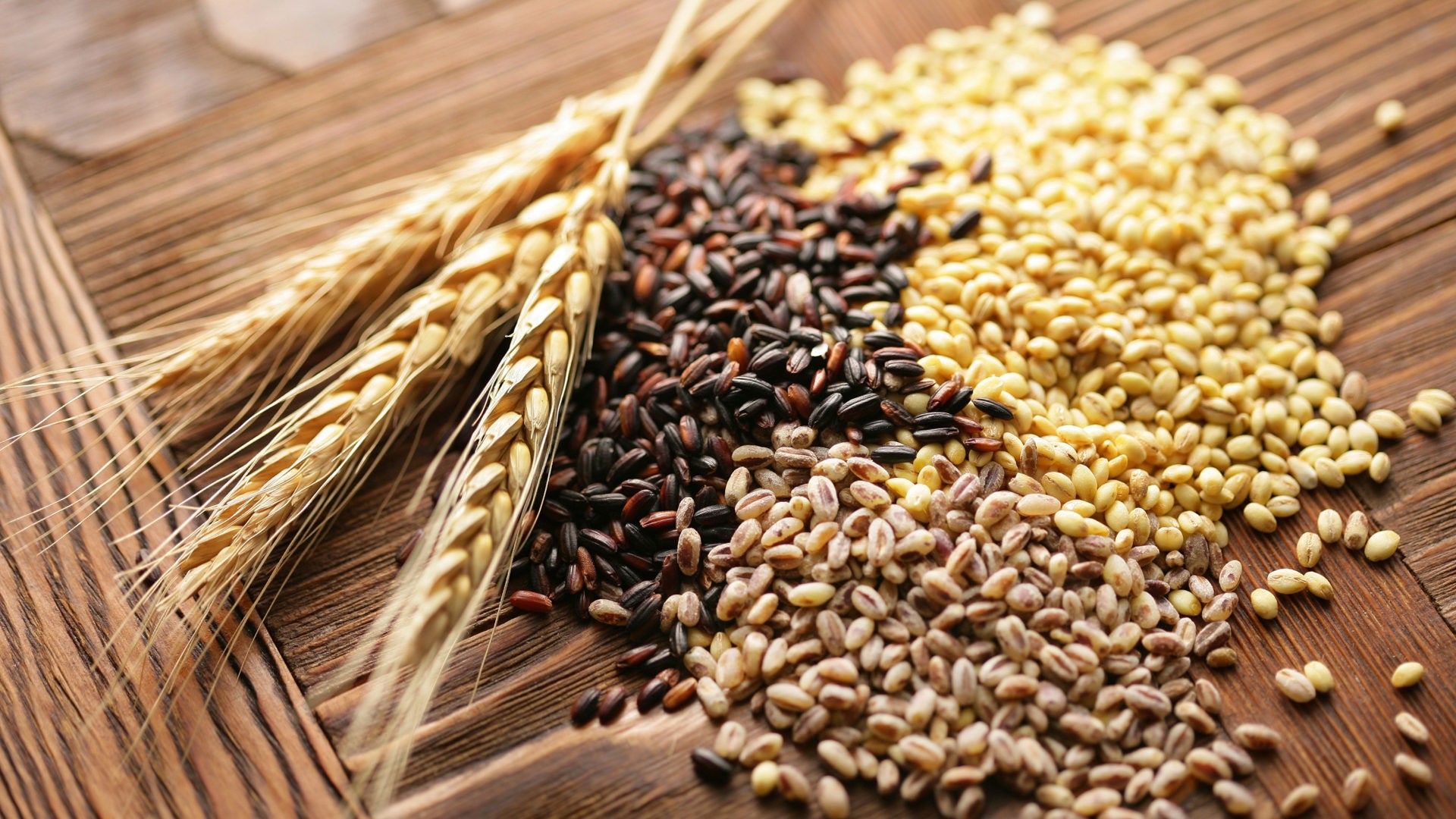
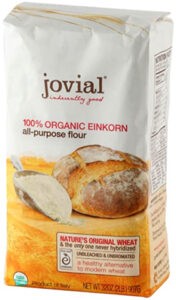
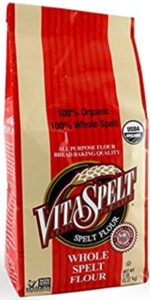
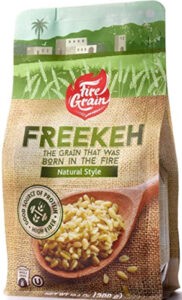
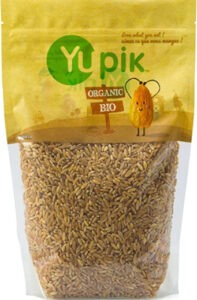
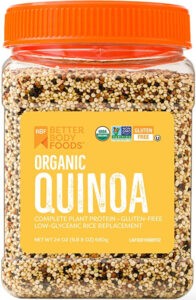
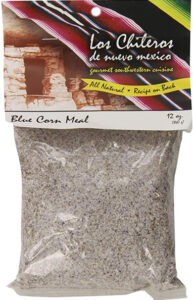
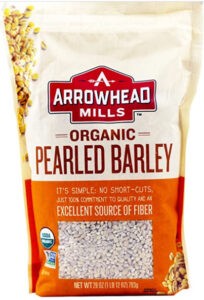
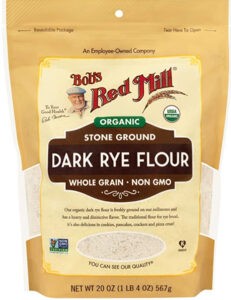
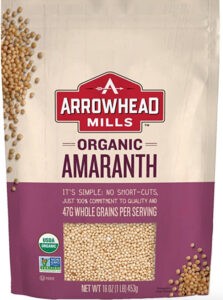
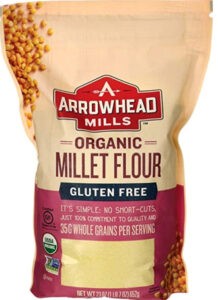
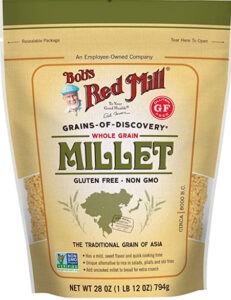
I use as much ancient grains in all my cooking that I can. I have for years…amaranth, are some of my favorites. Easily grown, easily harvested, and easily prepared. Thank you for your site. Its both educational and academic.